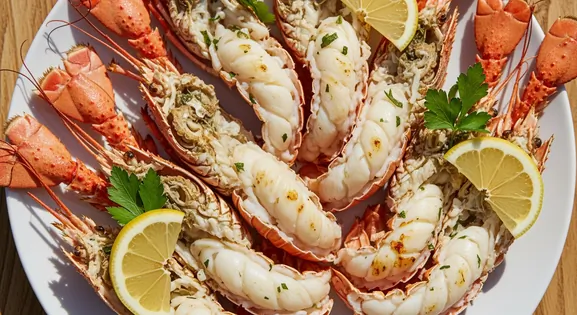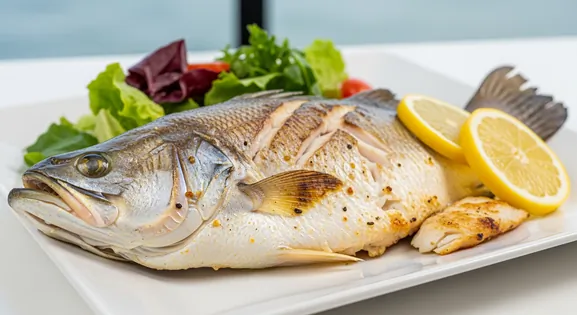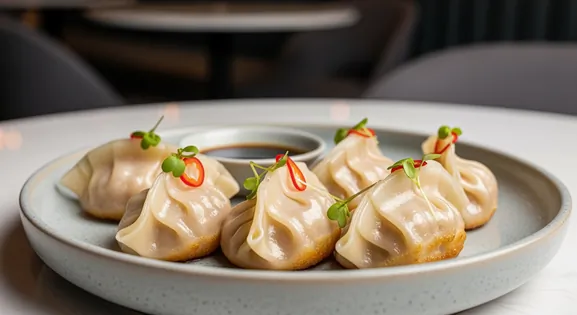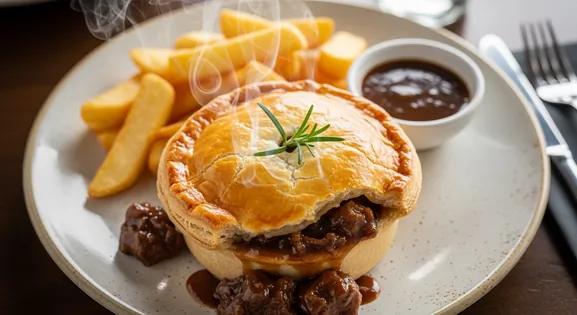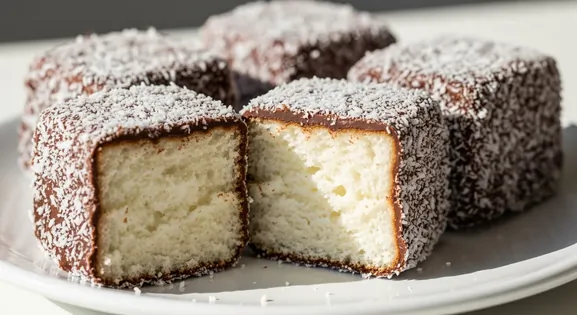Fish and Chips in Australia: A Complete Food Lover's Guide
Fish and Chips
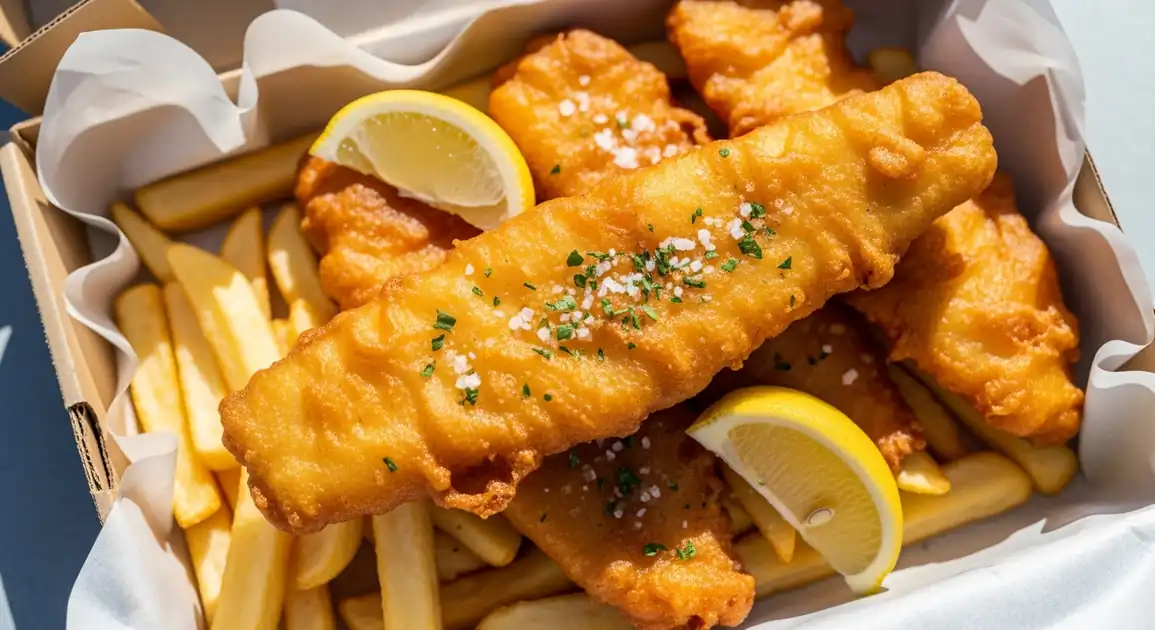
What is Fish and Chips?
Fish and Chips is a beloved takeaway meal in Australia, consisting of fish fillets coated in batter and deep-fried until golden brown and crispy, served alongside hot, thick-cut potato chips (fries). It's often seasoned with salt (plain or chicken salt) and served with lemon wedges and tartare sauce. This simple, satisfying dish is a staple of casual dining, especially associated with coastal areas and relaxed weekends.
From Humble Origins: A Brief History
Originating in the United Kingdom in the mid-19th century, Fish and Chips quickly spread throughout the Commonwealth. It arrived in Australia and became firmly established as a cheap, accessible, and popular meal, particularly from the early 20th century onwards. Its popularity surged with the growth of takeaway culture and its suitability for informal eating, perfectly matching Australia's beach lifestyle. It remains an enduring culinary icon.
Traditional Preparation Techniques
Fresh fish fillets (like Snapper, Barramundi, Flake) are typically dipped in a simple batter made from flour (usually wheat), water or beer, and sometimes raising agents. They are then deep-fried in hot vegetable oil until the batter is crisp and golden, and the fish is cooked through and flaky. Thick-cut potatoes are deep-fried, often twice, to achieve a crispy exterior and fluffy interior. Both are usually drained briefly before being seasoned generously with salt (plain or chicken salt) and wrapped, typically in paper or served in a cardboard box.
Key Ingredients of Fish and Chips
Fish Fillets
Typically, white, flaky fish varieties such as Snapper, Barramundi, or Flake (gummy shark) are preferred for their mild flavor and tender texture when cooked. The freshness of the fish is absolutely paramount, as it directly impacts both the taste and the overall texture of the final dish, ensuring a pleasant, non-fishy experience.
Quality indicator: Look for firm, translucent flesh with no strong 'fishy' odor.
Potato Chips
Thick-cut potatoes are a crucial component, typically fried twice to ensure a perfectly crispy exterior while maintaining a fluffy, soft interior. These golden-brown chips are the essential and satisfying accompaniment to the fish, providing a delightful textural contrast and absorbing the flavors of the meal.
Quality indicator: Should be golden, crisp on the outside, and tender inside, not soggy or overly greasy.
Batter
A simple mixture of flour, water (or beer), and sometimes leavening agents, creating a light, crispy coating when deep-fried.
Quality indicator: Should be light, airy, and golden-brown, adhering well to the fish without being overly thick or doughy.
Local Fish and Chips Variations in Australia
Grilled Fish
Fish fillet cooked on a hotplate or grill instead of battered and fried. Often seasoned with lemon pepper or herbs. A lighter option.
Crumbed Fish
Fish fillet coated in breadcrumbs instead of batter, then deep-fried. Offers a different crispy texture.
Specific Fish Types (e.g., Snapper, Barramundi, Flake)
Most shops offer choices. Flake (gummy shark) is common, Barramundi is popular, Snapper is often a premium local choice. Prices vary.
Chicken Salt on Chips
A ubiquitous savoury salt blend offered as an alternative to plain salt for seasoning chips.
Potato Scallop / Potato Cake
A slice of potato battered and deep-fried. Name varies by state ('scallop' in NSW/QLD, 'cake' in VIC/SA/TAS).
What to Serve with This Dish
Lemon Wedges
Condiment
A squeeze of fresh lemon juice cuts through the richness of the fried fish and chips, adding a bright, zesty counterpoint that enhances the flavor.
Tartare Sauce
Condiment
A creamy, tangy sauce made with mayonnaise, capers, gherkins, and herbs, providing a rich and savory complement to the fried fish.
A Traveler's Guide to Authenticity
What to Look For
-
Fish fried fresh to order.
Ensures thorough cooking at high temperatures, which enhances crispness and overall quality.
-
Chips cooked until piping hot and golden.
Ensures chips are cooked through and served at their optimal temperature for enjoyment.
-
Clean frying oil (light golden color, no strong 'old oil' smell).
Oil quality significantly affects taste and the overall quality of the fried product. Regularly changed oil is crucial for a great meal.
-
Busy shop with high turnover.
A consistently busy shop often indicates fresh ingredients and frequent oil changes, as popular spots need to replenish stock and maintain quality to keep customers coming back.
-
Clean premises and food handling practices.
Observe the overall cleanliness of the shop, including counters, floors, and staff hygiene. A well-maintained and tidy environment is a strong indicator of a quality establishment that prioritizes food safety.
What to avoid
-
Pre-cooked fish or chips sitting under heat lamps for long periods.
Food held at warm temperatures can compromise freshness and texture. Best avoided unless turnover is visibly very high.
-
Very dark, sludgy, or foul-smelling cooking oil.
Indicates oil is old and breaking down, affecting taste and overall quality.
-
Fish that smells overly 'fishy' or ammonia-like before cooking.
A strong, unpleasant 'fishy' or ammonia-like odor is a clear and critical indicator that the fish is not fresh and should be avoided to ensure a pleasant and safe dining experience.
-
Excessively greasy appearance or pooling oil.
May indicate oil temperature was too low during frying, leading to excessive oil absorption.
-
Dirty counters, equipment, or poor staff hygiene.
These are clear red flags for a quality establishment.
Explore Fish and Chips in Detail: City Guides
Discover where to find the best Fish and Chips and learn local tips in these cities:
Dietary Information
Dietary Information
Important Note for Travelers: Your safety is our priority. Below are the common allergens associated with the traditional preparation of this dish. However, recipes and ingredients can vary significantly between establishments. Always confirm all ingredients directly with the food vendor before ordering, especially if you have a severe allergy.
Potential Allergens
Dietary Suitability
How to Order Fish and Chips
Frequently Asked Questions about Fish and Chips
What is Australian Fish and Chips?
Australian Fish and Chips is a popular takeaway meal featuring battered, deep-fried fish fillets with thick-cut chips. While originating from the UK, it's an iconic part of Australian food culture, often enjoyed casually, especially near the coast. Common accompaniments include salt (plain or chicken salt), lemon, and tartare sauce.
What kind of fish is used in Australia?
Fish types vary by location, price, and availability. Common choices include Flake (gummy shark, especially VIC/SA), Snapper, Barramundi, Hoki, Whiting, Flathead, and Blue Grenadier. Shops often offer several options, sometimes specifying 'local' catches. Quality shops are transparent about the fish type.
Is Fish and Chips a good choice from takeaway shops?
Generally yes, as it's cooked to order at high temperatures. Key quality indicators are the freshness of the fish, the cleanliness of the oil (changed regularly), and overall shop hygiene. Choose busy shops (high turnover) and look for clean oil, ensuring the food is served piping hot.
What is 'Chicken Salt'?
Chicken salt is a popular savory seasoning blend ubiquitous in Australian takeaway shops, especially for chips. Despite its name, traditional recipes are typically vegetarian, containing salt, paprika, onion powder, garlic powder, and other spices, giving it a distinct umami flavor.
Can I get gluten-free Fish and Chips in Australia?
Standard Fish and Chips is not gluten-free due to the wheat flour batter. However, some shops now offer gluten-free batter options or grilled fish. Always confirm no gluten seasoning or cross-contamination. Availability varies, so always ask specifically if you require GF.
What are 'minimum chips'?
'Minimum chips' is the smallest standard serving size of chips offered by a fish and chip shop, usually sold by dollar value (e.g., $4 or $5 worth). It's a common way to order chips, often enough for one or two people as part of a larger order.
Expert How-To Guides about Fish and Chips
How to Spot a Good Fish and Chip Shop
Learn to identify the best fish and chip shops by observing key indicators of freshness, cleanliness, and high-quality preparation practices.
- Check the oil: Look at the fryer oil if visible. It should be relatively clear and light golden, not dark brown or sludgy. Smell the air - it shouldn't smell like old, stale oil.
- Look at the fish display (if any): Fresh fish fillets should look moist and firm, not dry or discolored.
- Busy is good: High turnover usually means fresher ingredients and oil rotation.
- Cleanliness: The shop counters, floors, and equipment should look clean and well-maintained.
- Ask about the fish: Good shops are happy to tell you what type of fish they use and if it's local.
- Observe the process: Fish should ideally be battered and fried fresh to order.
Ordering Like an Aussie
Master the local lingo and customs to confidently place your order at an Australian fish and chip shop, ensuring you get exactly what you want.
- Decide on your fish: Choose from the displayed options (e.g., Flake, Barra, Snapper). Specify battered, crumbed, or grilled (if offered).
- Order chips: Ask for 'minimum chips' or specify a dollar amount (e.g., '$6 chips').
- Specify salt: Ask for 'salt' (plain) or 'chicken salt'. You can ask for 'no salt' or 'light salt'.
- Add extras: Consider potato cakes/scallops, dim sims (steamed or fried), calamari rings, pineapple fritters, etc.
- Choose sauces: Tartare sauce, tomato sauce (ketchup), or vinegar are common choices, often sold separately in sachets or tubs.
- Confirm your order and wait for your number/name to be called.
Smart Eating Tips for Fish and Chips
Enjoy this classic treat more mindfully by making informed choices about preparation, portion sizes, and accompaniments to balance your meal.
- Choose grilled fish: If offered, grilled fish is a lighter alternative to battered or crumbed.
- Ask for less salt: Control your sodium intake by requesting light salt or no salt, adding your own sparingly if needed.
- Drain excess oil: Let the fish and chips sit on the paper for a moment to drain, or gently pat with a napkin.
- Share a portion: Servings can be large; consider sharing chips or ordering a smaller size.
- Add a side salad: Some shops offer basic salads, or add your own later for balance.
- Eat fresh: Fish and chips are best eaten immediately while hot and crispy. Avoid letting them sit and get soggy.
Our Commitment to Quality
At Tasteplorers, our mission is to provide the most accurate and useful travel information in the world. To achieve this, all content on this site is created through our unique editorial framework. We utilize leading AI research tools, guided by our proprietary prompts, and a multi-stage validation process. This entire system is overseen by our editorial team to ensure everything we publish meets our high standards for accuracy, cultural nuance, and practical value for travelers.
Learn more about our Editorial Process and our Mission.
Explore regions
Europe
Discover Europe's diverse culinary landscape, from Mediterranean flavors to hearty Alpine fare. Learn to navigate markets, decode menus, and eat like a local.
Latin America & Caribbean
Discover the vibrant cuisines of Latin America & the Caribbean. Our expert guide covers everything from Mexican street food to Peruvian ceviche and market tips.
Oceania
Explore Oceania's diverse food scene. Learn about Polynesian earth ovens, Fijian feasts, and the vibrant café culture of Australia and New Zealand.
Southeast Asia
Explore Southeast Asia's diverse food cultures from Thailand to Vietnam. Get expert tips on navigating spice levels, choosing quality vendors, and understanding the rich traditions of the region.
